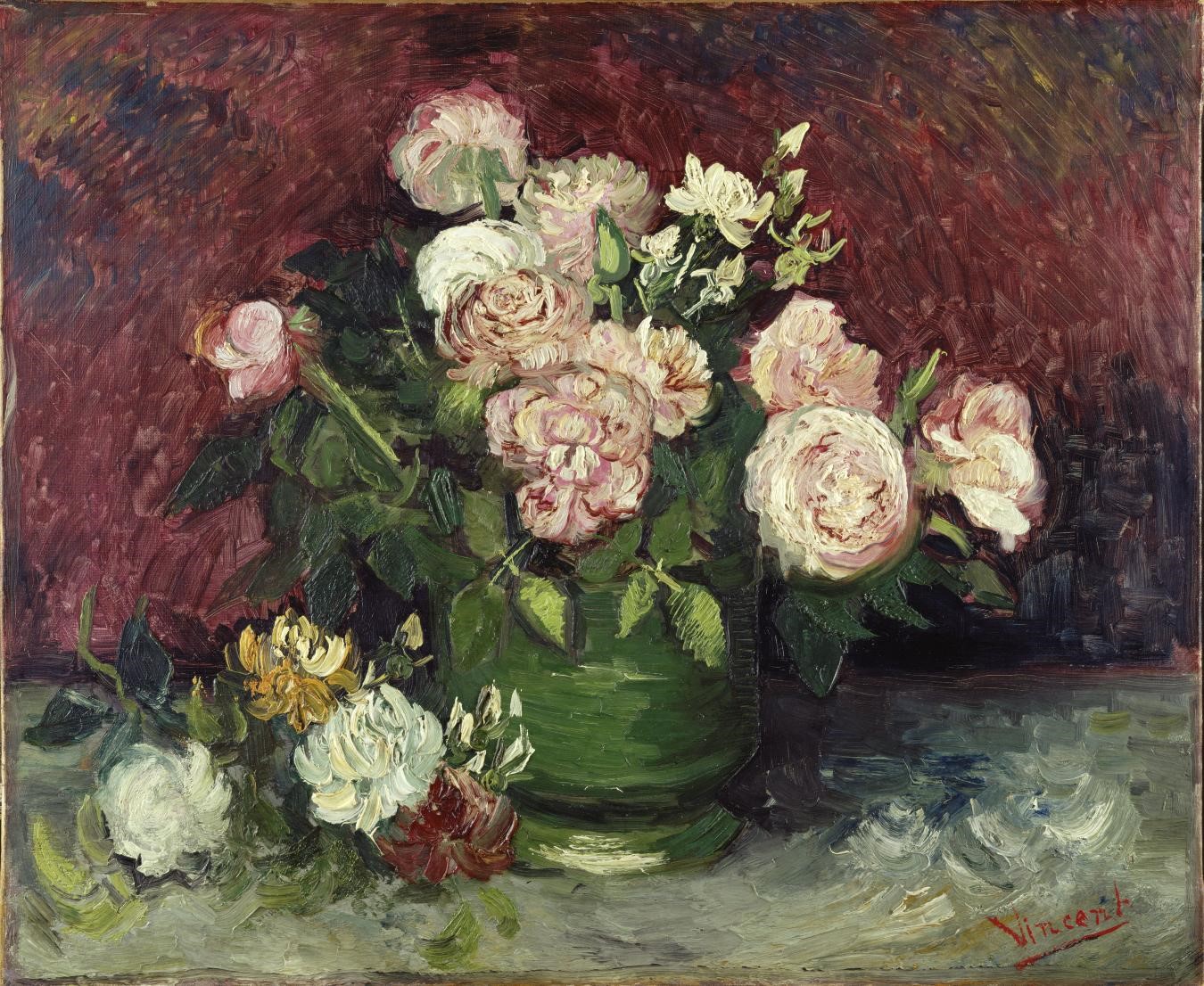“Beauty Everywhere” in Vincent van Gogh’s Paintings of Flowers February 27, 2019
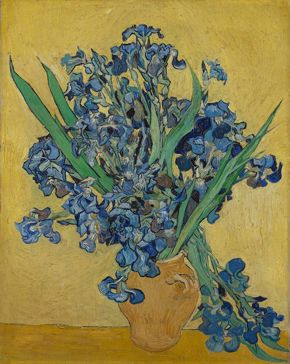
Vincent van Gogh, Irises, May 1890, oil on canvas, Van Gogh Museum, Amsterdam (Vincent van Gogh Foundation).
Vincent van Gogh, Roses and Peonies, 1886, oil on canvas, Kröller-Müller Museum, Otterlo. © Kröller-Müller Museum
Vincent van Gogh, Vases with Gladioli and Chinese Asters, August–September 1886, oil on canvas, Van Gogh Museum, Amsterdam (Vincent van Gogh Foundation).
Vincent van Gogh, View of Saintes-Maries-de-la-Mer, June 1888, oil on canvas, Kröller-Müller Museum, Otterlo. © Kröller-Müller Museum
“If you truly love nature, you will find beauty everywhere.” —Vincent van Gogh
Vincent van Gogh sought solace in the natural world, to which he returned time and again for artistic inspiration. You’ll find quite a few depictions of flowers, trees, and fields in the exhibition Vincent van Gogh: His Life in Art, which makes its only stop in Houston.
“Fresher in Color”
Still lifes of flowers played a decisive role in the pivotal change that Van Gogh’s style underwent during his years in Paris (1886–88). His production could be described as feverish—he painted at least 30 of these works during the summer of 1886 alone. As his brother, Theo, wrote to their mother in July of that year, Theo strongly hoped that, by painting these still lifes, Vincent would “make his works fresher in color.”
Vincent van Gogh, Roses and Peonies, 1886, oil on canvas, Kröller-Müller Museum, Otterlo. © Kröller-Müller Museum
Red & Green
By that time, a general appreciation of the lighter palettes of the Impressionists had set in. Van Gogh’s first exposure to works by the Impressionists and Pointillists dates to this period, but rather than just imitating them, he delved into the field of color theory, as Roses and Peonies shows. Red and green—opposites on the color wheel of primary and secondary colors—dominate this composition. The high ridges of paint and the sculptural quality of his brushwork would eventually become a hallmark of his painting.
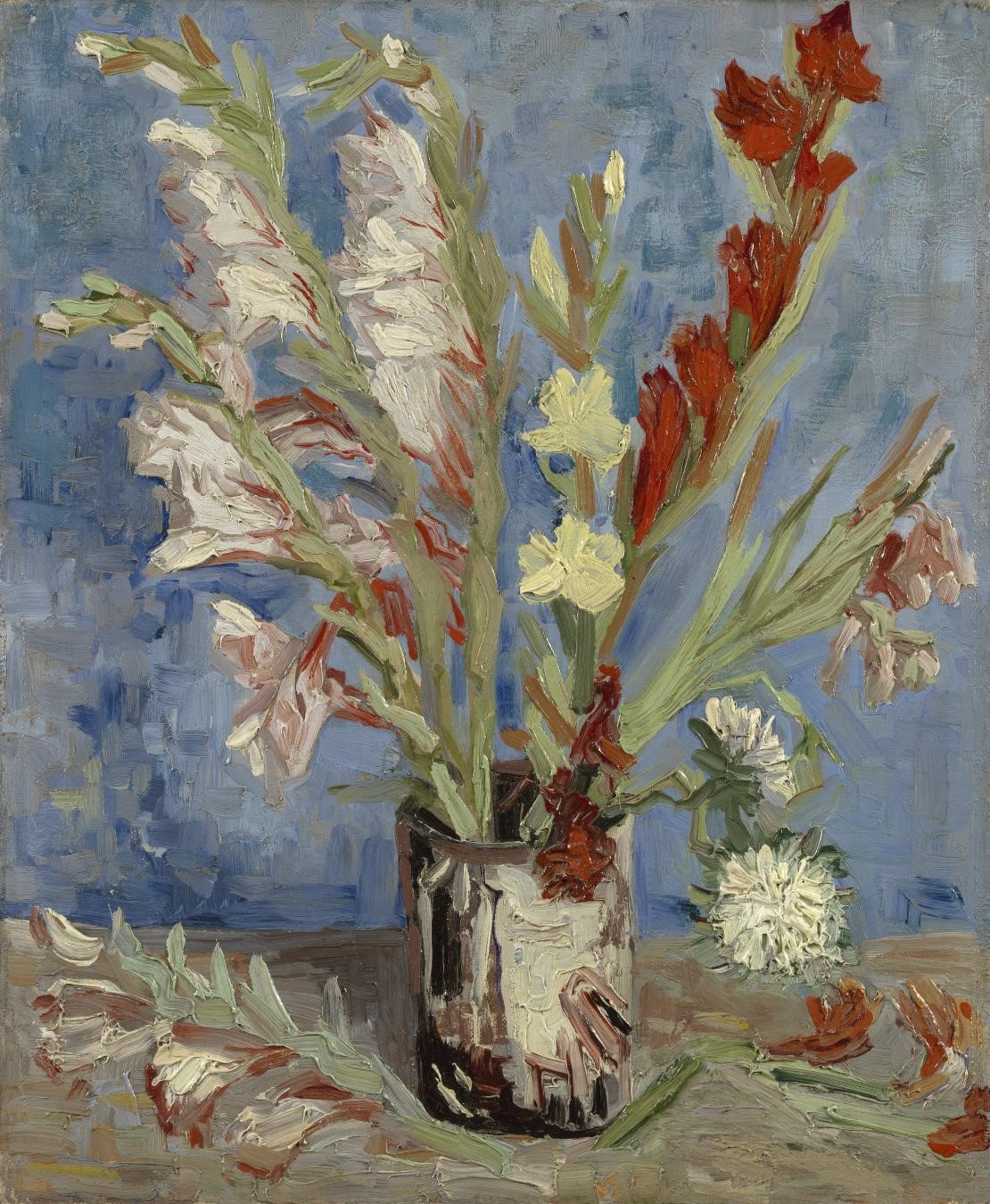
Vincent van Gogh, Vase with Gladioli and Chinese Asters, August–September 1886, oil on canvas, Van Gogh Museum, Amsterdam (Vincent van Gogh Foundation).
Cobalt Blue
For the background of Vase with Gladioli and Chinese Asters, Van Gogh used his favorite cobalt blue. In comparison, the brushstrokes give the impression of a monochrome, flecked wallpaper. This backdrop serves as a cool foil to the exuberant whites, pinks, reds, and yellows of the flowers. The ground, on the other hand, is painted in a soft pink-brown that harmonizes with the pink and red gladioli. Already in these early flower still lifes, Van Gogh shows his tendency toward a shallow picture space, a characteristic that also informs his celebrated bouquets of roses, sunflowers, and irises.
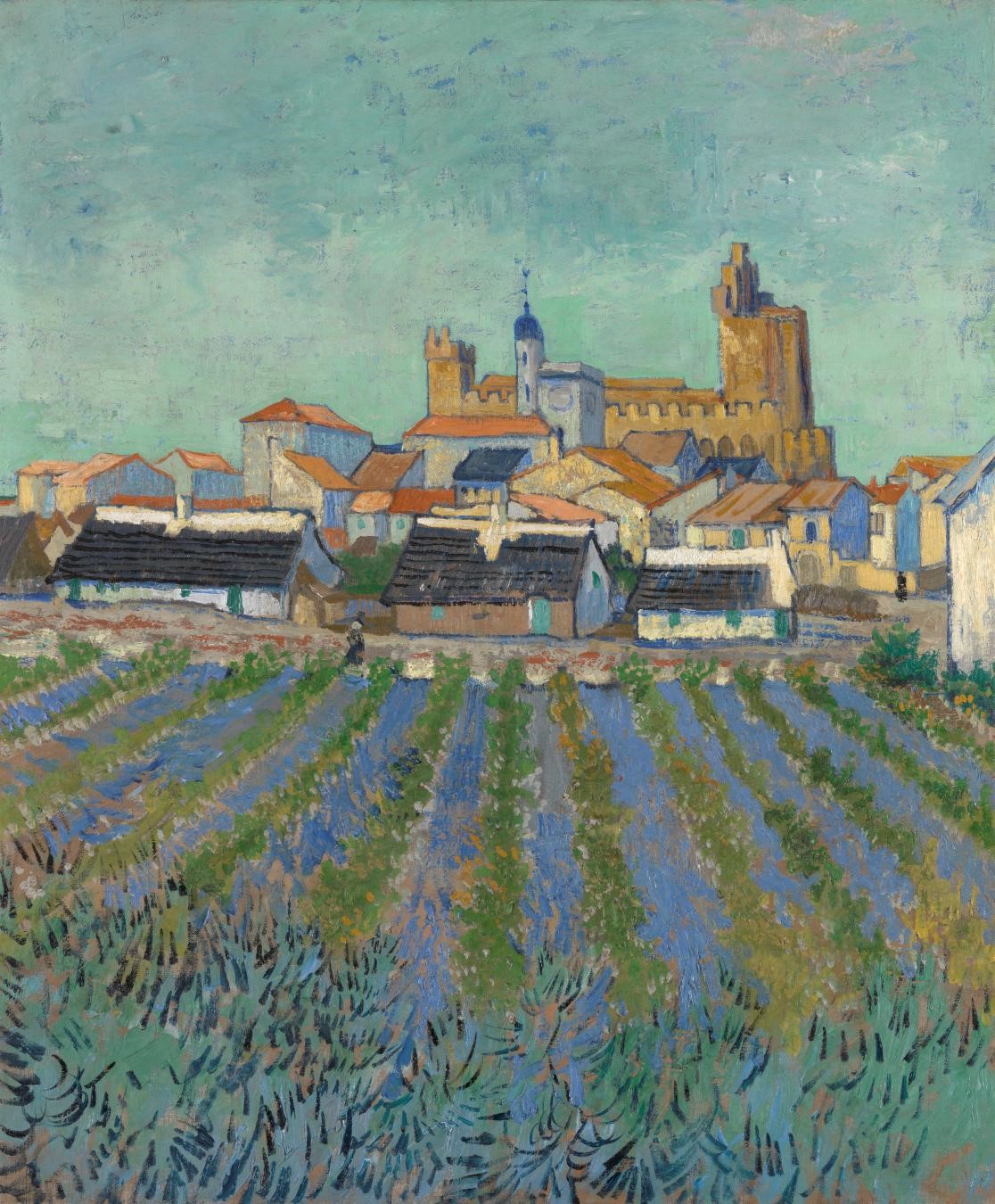
Vincent van Gogh, View of Saintes-Maries-de-la-Mer, June 1888, oil on canvas, Kröller-Müller Museum, Otterlo. © Kröller-Müller Museum
Blues & Oranges & White-Hot
In 1888, Van Gogh traveled south by coach from Arles to Saintes-Maries-de-la-Mer, a seaside town on the Mediterranean, and stayed for three days. He took three blank canvases with him, and this is one of the resulting paintings; the other two are seascapes. View of Saintes-Maries-de-la-Mer depicts the northern view of the town. Rows of purple-blue bushes lead the eye toward the central church. The painting is dominated by the “green blue of the sky heated white-hot,” as the artist described the light of Provence in one of his letters. The composition is a geometric construction of blues and oranges—complementary colors—and reminiscent of Paul Cézanne, whom Van Gogh was beginning to admire.
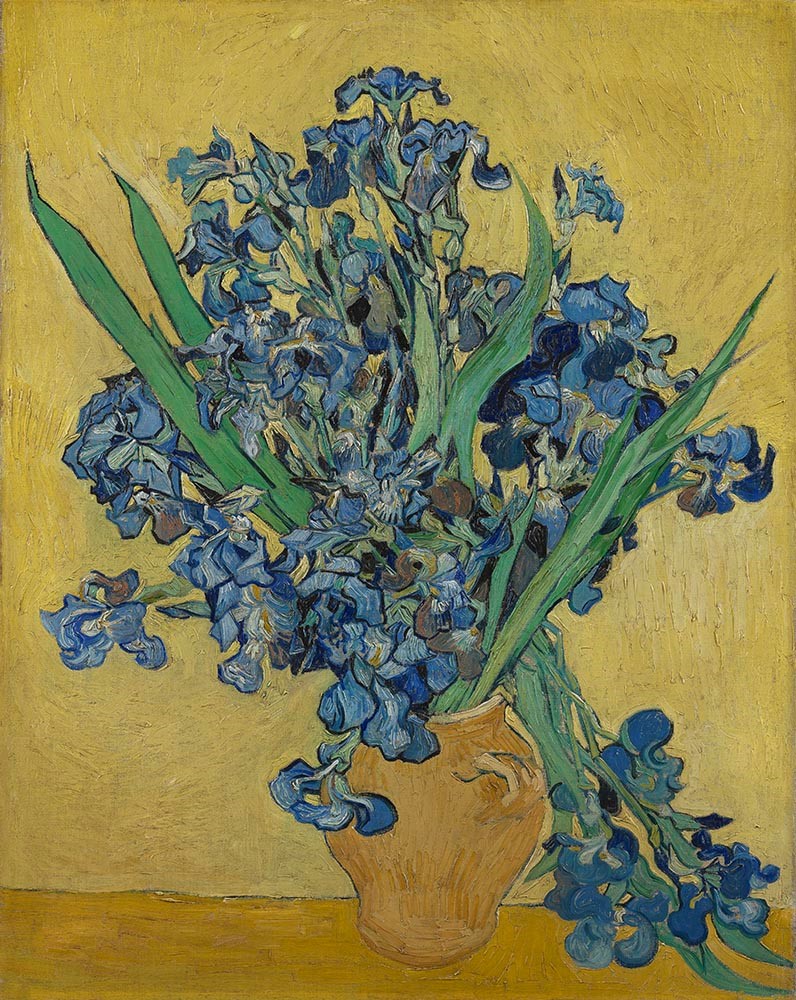
Vincent van Gogh, Irises, May 1890, oil on canvas, Van Gogh Museum, Amsterdam (Vincent van Gogh Foundation).
Yellow, Purple & Green
Van Gogh loved irises—the elegant, lily-like spring flowers that grow in luscious profusion in Provence—and this glorious bouquet is one of Van Gogh’s greatest still lifes. Its pendant, a horizontal still life of irises, is one of the masterpieces of the Metropolitan Museum of Art in New York. The painting vibrates with life, thanks to energetic brushstrokes and use of vivid hues. The artist’s fascination with the theory of complementary colors appears in the effects of yellow against purple (now faded to blue) and green.
See more in “Vincent van Gogh: His Life in Art,” on view in the Beck Building from March 10 through June 27.

